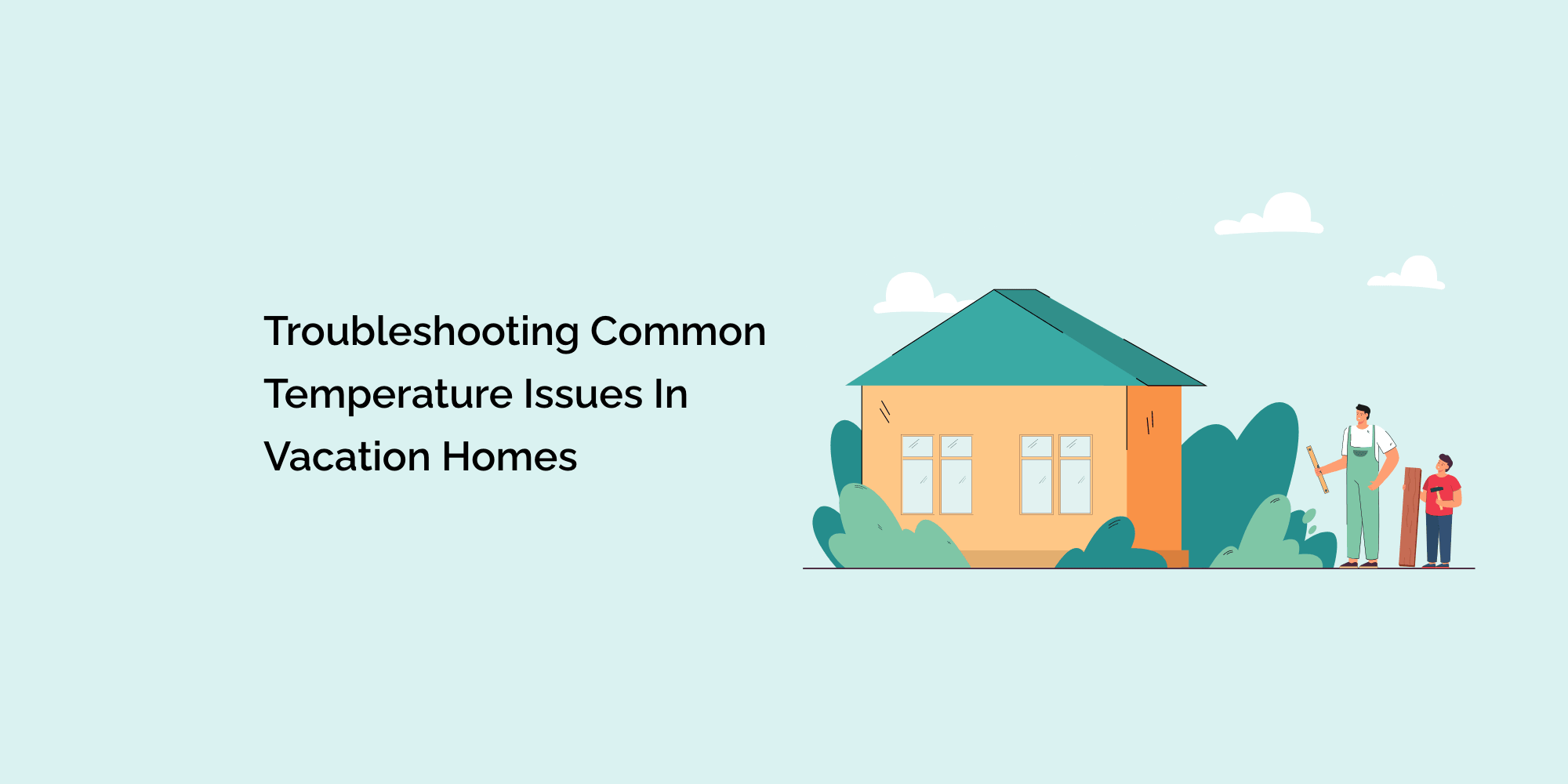Maintaining a comfortable temperature in your vacation home is essential for a relaxing and enjoyable getaway. However, temperature issues can arise, affecting your stay's comfort and overall experience. In this blog, we will explore common temperature issues in vacation homes and provide troubleshooting tips to help you resolve them. By understanding these issues and implementing practical solutions, you can ensure a comfortable and hassle-free stay in your vacation home. Let's dive into the world of troubleshooting temperature problems and reclaim the ideal climate for your vacation retreat.
Inconsistent Temperature Throughout the Home
-
Check Thermostat Placement: Ensure that the thermostat is placed in a central location away from direct sunlight, drafts, or heat sources. Correct thermostat placement can lead to accurate temperature readings and uneven cooling or heating.
-
Inspect Air Vents and Ductwork: Examine air vents and ductwork for any blockages or obstructions. Dirty filters, closed vents, or damaged ducts can hinder airflow and result in inconsistent temperatures. Clean or replace filters regularly and ensure vents are open and unobstructed.
- Balance HVAC System: Imbalances in the HVAC system can cause temperature variations. Consult a professional technician to evaluate and balance the system by adjusting air registers or dampers to ensure equal airflow throughout the home.
The HVAC System is Not Cooling or Heating Adequately
-
Check Air Filters: Clogged or dirty air filters restrict airflow, reducing the system's efficiency. Regularly clean or replace air filters to maintain optimal airflow and ensure the system can effectively cool or heat your vacation home.
-
Verify Thermostat Settings: Double-check that the thermostat is set to the desired temperature and the appropriate cooling or heating mode. Ensure the thermostat's batteries are functioning properly and replace them if needed.
- Inspect Condenser Unit: Examine the outdoor condenser unit for any debris, dirt, or obstructions. Clean the department and its surrounding area for proper airflow and heat exchange. If the condenser appears damaged or malfunctioning, consult a technician for repairs.
Air Leaks and Drafts
-
Seal Air Leaks: Inspect windows, doors, and any other potential openings for air leaks. Apply to weatherstrip or caulking to seal gaps and prevent unwanted drafts. Addressing air leaks helps maintain a consistent temperature and improve energy efficiency.
- Check Insulation: Inadequate insulation can contribute to air leaks and temperature fluctuations. Assess the insulation in your vacation home, particularly in the walls, attic, and crawl spaces. Consider adding or upgrading insulation to enhance temperature control and reduce energy consumption.
Uneven Sunlight Exposure
-
Utilize Window Coverings: Window coverings like blinds or curtains can help regulate sunlight exposure and heat gain. Open them during more excellent times of the day to allow natural light, and close them during peak sunlight hours to minimize heat transfer.
- Install Reflective Window Films: Reflective window films can reduce the heat entering through windows. They reflect sunlight and help maintain a more comfortable indoor temperature. Consult with professionals to select the appropriate film for your vacation home's windows.
Smart Technology and Remote Monitoring
-
Consider Smart Thermostats: Upgrade to a smart thermostat that allows remote temperature control and scheduling. This enables you to adjust the temperature before arrival or monitor and make changes from anywhere using a mobile app.
- Invest in Remote Monitoring Systems: Remote monitoring systems with temperature sensors provide real-time data and alerts about temperature fluctuations in your vacation home. These systems allow you to address issues promptly, whether by adjusting the thermostat remotely or contacting a trusted person for assistance.
Certainly! Here are some frequently asked questions (FAQs) related to troubleshooting common temperature issues in vacation homes:
Why is my vacation home experiencing inconsistent temperatures throughout?
Various factors, such as improper thermostat placement, blocked air vents, or imbalances in the HVAC system, can cause inconsistent temperatures. Checking thermostat placement, inspecting air vents and ductwork, and balancing the HVAC system can help address this issue.
What should I do if my HVAC system is not adequately cooling or heating my vacation home?
Start by checking the air filters, as clogged or dirty filters can restrict airflow. Verify that the thermostat is set to the desired temperature and mode. Inspect the outdoor condenser unit for debris or obstructions. If the problem persists, it's best to consult a professional technician for further evaluation and potential repairs.
How can I prevent air leaks and drafts in my vacation home?
Inspect windows, doors, and other potential openings for air leaks. Apply weatherstripping or caulk to seal gaps and prevent drafts. Adequate insulation is also important to minimize air leaks. Consider adding or upgrading insulation in walls, attics, and crawl spaces.
Conclusion
Troubleshooting common temperature issues in your vacation home is crucial for maintaining a comfortable and enjoyable environment during your stay. By following the troubleshooting tips in this blog, such as checking thermostat placement, inspecting HVAC systems, sealing air leaks, and utilizing innovative technology, you can resolve temperature-related problems and create a pleasant atmosphere. Remember, some issues may require professional assistance, so don't hesitate to consult with experts in HVAC systems and home maintenance when necessary. With a proactive approach to troubleshooting, you can ensure a worry-free and relaxing experience in your vacation home, where the temperature is just right for ultimate comfort.








